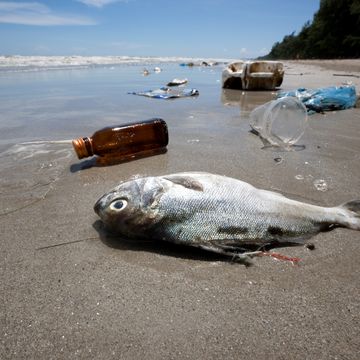(Permanent Musical Accompaniment To The Last Post Of The Week From The Blog’s Favourite Living Canadian)
As the details of the supporting material behind the Mar-a-Lago search warrant began dripping out on Friday, and then when the actual documents were released, there was one gobstopper tucked away in all the underbrush of legal bafflegab. From the warrant:
All physical documents and records constituting evidence, contraband, fruits of crime, or other items illegally possessed in violation of 18 U.S.C. §§ 793, 2071, or 1519…
For those of you scoring at home, 18 USC 1519 is obstructing a federal investigation, and 18 USC 793 is the Espionage Act.
Excuse me? The goddamn Espionage Act? Someone’s playing for keeps here.
If we are talking about obstruction, and about the Espionage Act, the stakes on this whole thing just went to the moon. The Espionage Act should be chloroformed as a relic from the horrible days of the Wilson Administration, but it still has considerable teeth in it. It’s a vast and unbridled hunting license. It has elements that deal with the unacceptable possession and storage of classified material. It isn’t entirely about “spying.” So the wilder speculation needs to go back in the freezer for a bit. But, still, do you want to be the target of an investigation the first time that someone says, “espionage,” out loud?
This was the week that I learned about the hunger stones, which were something I would not have known about had I not been quarantined for five days with the Covid, so the pandemic has that much to say for itself. It was a boon to research, at least for me. Anyway, the hunger stones are markers in the rivers of eastern Europe, some of them dating to the 15th Century. Their purpose was to mark low water levels during times of drought because times of drought were also times of famine. From NPR:
One of the stones on the banks of the Elbe is carved with the words "Wenn du mich siehst, dann weine": "If you see me, weep.”
This stone was revealed again in 2018, when the Elbe ran low during a drought. The latest date carved into it was 1616. Right now, Europe is experiencing even worse drought conditions. For example, the Rhine is running dry — so dry, in fact, that it has complicated German shipping and, therefore, the German economy. From Reuters:
Weeks of baking temperatures and scant rainfall this summer have drained the water levels of the Rhine, the country's commercial artery, causing delays to shipping and pushing freight costs up more than five-fold. A spokesperson for the transport ministry told a government news conference on Wednesday that "we do expect an intensification of the low water level" on the Rhine, but could not say if or when vessels might no longer be able to pass along the river… Economists estimate the disruption could knock as much as half a percentage point off Germany's overall economic growth this year. Barges like the Servia, a 135-metre (148 yards) vessel carrying iron ore from the port of Rotterdam to German steelmaker Thyssenkrupp's (TKAG.DE) plant in Duisburg, can only load 30-40% of its capacity or risk running aground.
The hunger stones, including the ominous one in Czechia, have reappeared. Their warnings echo from history down through the the centuries to our unprecedented times. Drought is connected to famine which is connected to poverty. The people who carved the stones knew this. From the Miami Herald:
According to the drought observatory, 47% of Europe is in drought warning conditions, meaning the soil has a moisture deficit. Another 17% is on alert, meaning the vegetation in the area is being affected by the dry conditions. Major rivers in Germany, Italy, and England – the Rhine, Po, and Thames, respectively – are drying out, DW reported. The outlet reported that rivers are “too dry, too low, and too warm,” which has consequences on wildlife, the economy and people.
What will be the hunger stones left behind to warn future generations about the consequences of environmental neglect? And will there be anyone around to read them?
We got another dispatch recently from old Friend of the Blog Dr. Ken Starnes, an emergency room physician down in Winters Bone country where Missouri and Arkansas collide. Here’s part of it, in which Ken talks about how the pandemic has become a part of daily life:
When I was in college I was lucky enough to get to spend quite a bit of time in Northern Ireland, in the mid-nineties, right at the tail end of The Troubles. I was luckier still to be able to make some close friends that invited me into their homes and bars and showed me a side of the place most tourists never saw. (Turns out reading the wrong newspaper in a Bogside bar is a good way to meet redheads from Buncrana that warn you to put it away before “The Boys” see it).
My friends were all Catholic, some living down The Falls in Belfast and some from the Republican parts of Derry. They showed me around both towns, I saw all the place I had seen on the news, Bobby Sands’ grave, and the bar that gave me free drinks so “thank youse for all the lovely guns” that had found their way from the Massachusetts National Guard armory. It was late in the conflict, the Good Friday Accords had not been signed yet, and most of the time you really didn’t have sense that violence, or any badness would break out.
But you always knew where you were. Murals and Tricolors were everywhere, security cameras, armored trucks. You always looked up and saw the antennas on top of Divis Flats. And certainly there were always checkpoints. I’m fortunate that the only guns I have ever had pointed at me were by the the Army and the RUC checking IDs. (My friends were always happy to have me do the talking, as nothing diffused the situation like my Llewelyn Moss-ass accent). It was clear that no matter how much it better it was than years past, it was still an occupation and at that time it seemed like it was just how things would always be.
This is how it feels now with Covid. I get up to work, I make sure have masks—but I hardly think of why—I just wear masks all the time with every patient. I do all my typical stuff like rounding, checking my old notes, seeing a few minor patients hopefully. But all the sudden something jars me back to reality. The ambulance calls to tell us they’re bringing someone in needing oxygen from the nursing home where the roommate died of Covid. A patient checks in with a positive test and is asking for something, ANYTHING to feel better (which I don’t have), or I see the nurse restocking test swabs. A shift needs covered because a doc is positive. A couple critical airways and crashing patients. My first Covid deaths in months. And then I remember, yeah, the troops are still in the streets… One of us will get a text about a sick partner and can you come in tomorrow. And it’ll be like seeing a glimpse of an Army truck on a late night street in Belfast in '95. “Oh yeah” we’ll think. “Still have to deal with that”. We’ll go silent for a minute. But then we’ll go back to telling war stories, or planning the next trip, or simply tying to be mindful and enjoying the evening. But Covid still runs these streets, and looks like it’ll just always be like that. It doesn’t look like Bill Clinton and Martin McGuinness are coming to the rescue on this one.
Weekly WWOZ Pick To Click: “Can I Be Your Main Squeeze?” (Chuck Carbo): Yeah, I still pretty much love New Orleans.
Weekly Visit To The Pathe Archives: Here, from 1957, the trial of Soviet spy Rudolf Abel gets underway in New York. Abel, of course, was later traded for captured U2 pilot Francis Gary Powers in one of the most famous prisoner swaps of the Cold War. Abel was born in the UK as William August Fisher. He was buried in Moscow under his birth name. Powers ended up as a TV news helicopter pilot who died when his helicopter crashed in 1977. It had run out of gas while covering brush fires around Santa Barbara. History is so cool.
Consumer advisory: Jason Kander was an obvious political phenom. A decorated veteran, Kander won a seat in the Missouri state legislature and, in 2012, he was elected secretary of state. In 2016, he ran, and narrowly lost against incumbent U.S. Senator Roy Blount. At this point, Kander was cited as a reason for hope in our politics by no less than Barack Obama. There was talk of a presidential run as early as 2017.
But Kander had a terrible secret. His time as an intelligence officer in Afghanistan had left him with a crippling and worsening case of PTSD. He squashed any presidential talk and ran for the mayor of Kansas City. But the noise and savagery in his head grew too loud and he dropped out. He vanished from public life and worked hard to get himself back, step by step, day by day.
Now, with contributions from his wife, Diana, Kander has produced a memoir of his struggle. Invisible Storm is the farthest thing from a political autography and it sure as hell isn’t a campaign book. The book is brutal and unsparing, a survivor’s guide to that trackless wilderness in which so many soldiers reside when they come home again — or, at least, the one Kander found himself in when he came home to Missouri. Kander (and Diana) take no detours on their passage through it. And I was struck by one passage between Kander and his therapist, a man named Nick:
Nick laughed, which made me laugh, too. “Not long ago,” he said, “your personal goal was the presidency and one of the things we worked on was temporarily shrinking your world.
“Well, I’ve done that,” I said with a smile, “and it has obviously helped.”
"That’s good, but your world can’t stay this small forever. What if there’s a middle ground?”
For this, the rest of us can only hope, because the country needs Jason Kanders as big as he can make himself be. Read the book. It is an American life that is still in its early chapters.
Is it a good day for dinosaur news, Reuters? It’s always a good day for dinosaur news!
The Cretaceous Period dinosaur, named Jakapil kaniukura, would have been well-protected with rows of bony disk-shaped armor along its neck and back and down to its tail, they said. It measured about 5 feet (1.5 meters) long and weighed only 9 to 15 pounds (4-7 kg), similar to an average house cat. Its fossilized remains were dug up over the past decade near a dam in Patagonia in Rio Negro province's La Buitrera paleontological zone. The scientists described Jakapil in a study published in the journal Scientific Reports. The scientists said Jakapil marks a first-of-its-kind discovery of an armored dinosaur from the Cretaceous in South America. It is part of the thyreophoran dinosaur group that includes the likes of Stegosaurus, known for its bony back plates and spiky tail, and tank-like Ankylosaurus, covered in armor and wielding a club-like tail.
Always had a jones for the ankylosaurus, which seems to me to be one of evolution’s more imaginative creation. Now there are smaller, toy living tanks, too, ones that lived then to make us happy now.
Took the last dose of Paxlovid this morning, so the quarantine may be at an end. Thanks, Dr. Fauci! Be well and play nice, ya bastids. Stay above the snake-line, wear the damn mask, get the damn shots, especially the damn boosters, and spare a moment for the people of Ukraine, and for the people of Somalia as well.

Charles P Pierce is the author of four books, most recently Idiot America, and has been a working journalist since 1976. He lives near Boston and has three children.













